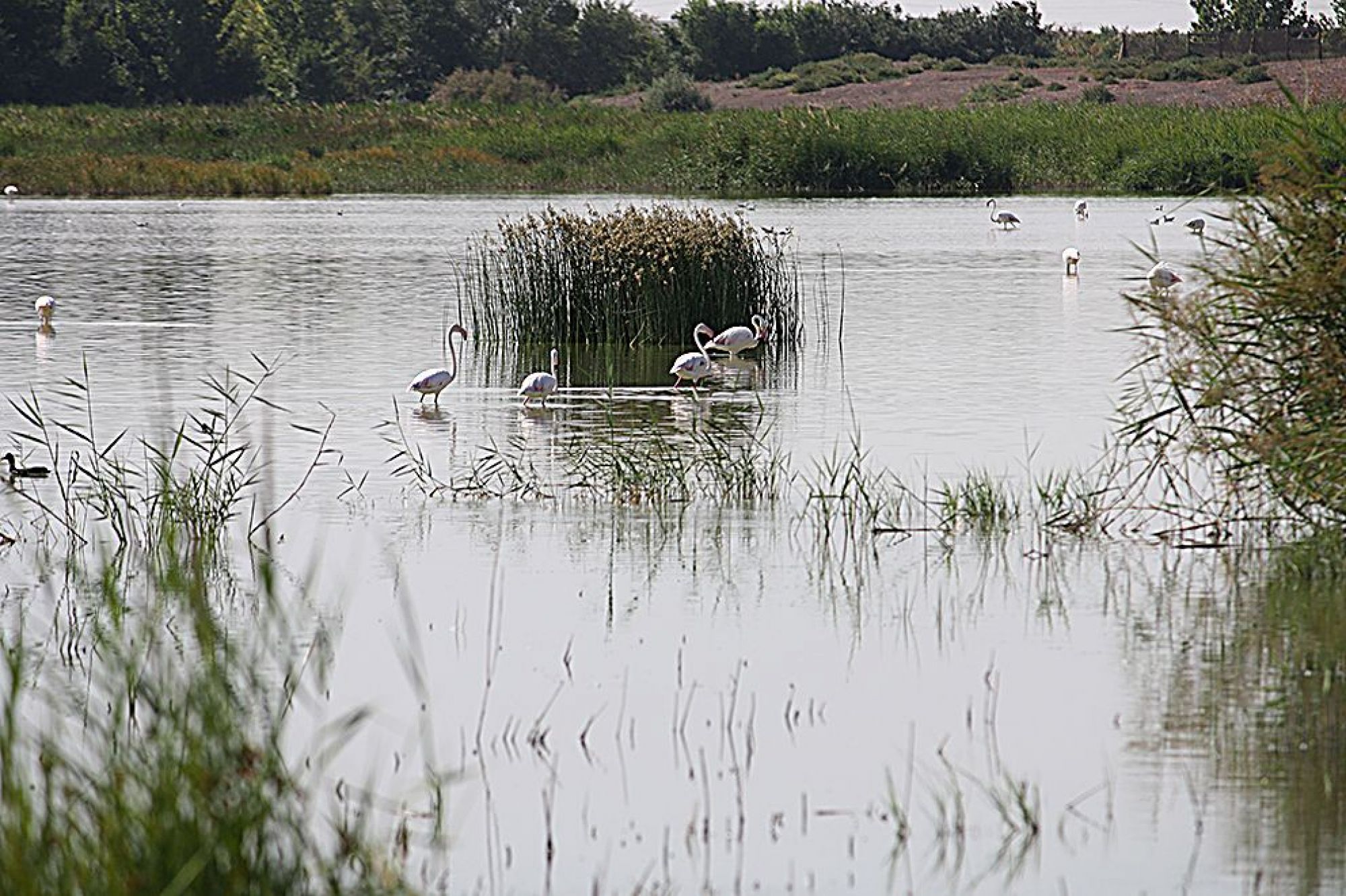El complejo comprende tres lagunas: La Veguilla, Camino de Villafranca y Las Yeguas. Este entorno natural tiene gran importancia como zona de reproducción y/o invernada de un gran número de aves asociadas a humedales. También se trata de un espacio protegido por la UNESCO, aumentando, si cabe, su atractivo.
Situadas en las proximidades de la ciudad, con un alto valor ecológico, lo que además ha propiciado la adopción de otras figuras de protección y reconocimiento: Refugio de Fauna, Zona Especial de Protección de Aves (ZEPA), Reserva de la Biosfera de la Mancha Húmeda (UNESCO), e incluidas como Zona Húmeda de importancia internacional dentro del Convenio RAMSAR.
En el caso de la laguna La Veguilla, esta recibe aportes de las aguas depuradas de la EDAR de Alcázar de San Juan, por lo que mantiene agua durante todo el año. Las otras dos tienen un carácter semiestacional, dependiendo su nivel del volumen de las precipitaciones y de los aportes derivados desde La Veguilla a través de un canal, por lo que las características ecológicas actuales difieren de las de la primera.
Se sitúan sobre los vasos de antiguos cauces de ríos que quedaron segmentados y cegados en ciertos tramos. La elevada salinidad de los suelos de la zona condiciona las formaciones vegetales que se encuentran en estas lagunas.
En los caminos que las recorren encontraremos puntos de observación de aves, alternando paisajes salinos y desérticos, que cambian a estepas para después convertirse en prados húmedos. Estos cambios hacen de este espacio su mayor atractivo.
Qué veremos
Con toda seguridad avistaremos aves difíciles de encontrar en ninguna otra parte. La comunidad de aves acuáticas es, sin duda, la más importante a nivel faunístico. A lo largo del año pueden observarse cigüeñuelas, pagazas piconegras, zampullines, tarros blancos y canelos, porrones, malvasías cabeciblancas, patos colorados y cucharas, flamencos, aguiluchos laguneros y muchas más especies en este variado ecosistema.
En el entorno de las lagunas pueden observarse especies esteparias e incluso forestales como la ganga ortega, la ganga ibérica, el cernícalo primilla, los aguiluchos pálido y cenizo, la canastera, el sisón, así como milanos negros y reales, entre otros; también observaremos diversos paseriformes, asociados a la vegetación palustre o a los medios esteparios circundantes.
El visitante podrá aprovechar el centro de interpretación, desde el cual se inicia un sendero interpretativo que llega a diversos observatorios situados en los márgenes de la laguna de La Veguilla, ofreciendo unas vistas excelentes.
Resultan interesantes las adaptaciones halófilas y xerófilas de la vegetación presente en las lagunas, que vienen reflejadas fundamentalmente por un periodo de desarrollo muy corto que evita las bajas temperaturas del invierno y la acusada sequía estival, hojas muy pequeñas y tallos carnosos para que no haya pérdidas excesivas de agua por evaporación y poder almacenar agua, flores muy pequeñas, ya que será el viento el agente polinizador, un porte con tendencia al enanismo y hojas lampiñas, que reducen la superficie transpirante y por último, un sistema radicular de desarrollo horizontal para aprovechar mejor las aguas meteóricas y alejarse de las aguas superficiales más salobres.
Accesos
Desde el municipio al complejo lagunar se llega por la CM-4133.
Desde el centro de interpretación se inicia un sendero interpretativo que llega a diversos observatorios situados en los márgenes de la laguna de La Veguilla. En las lagunas del Camino de Villafranca y Las Yeguas existen observatorios junto a sus márgenes.






















